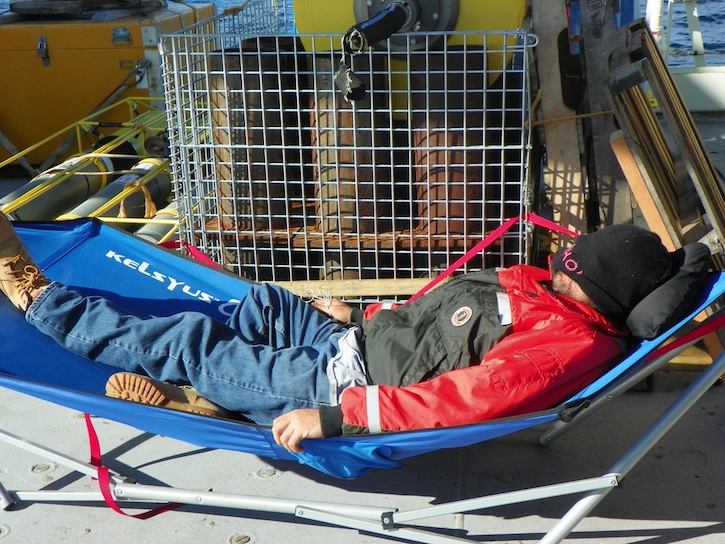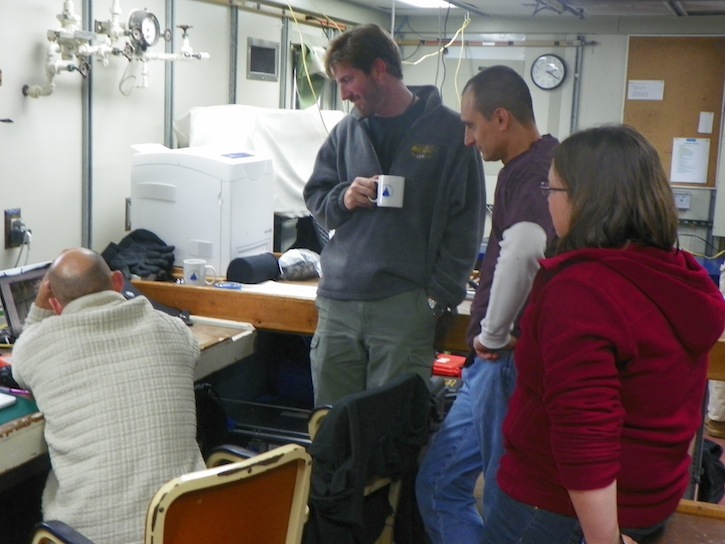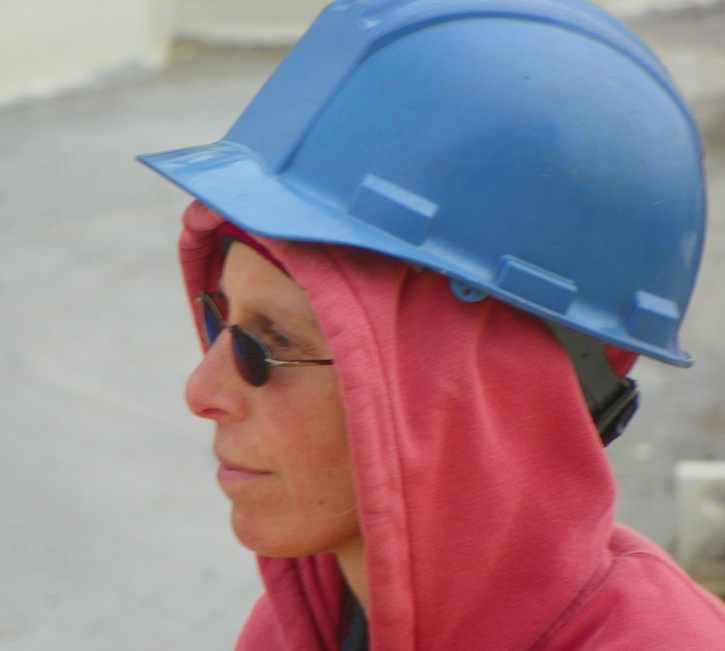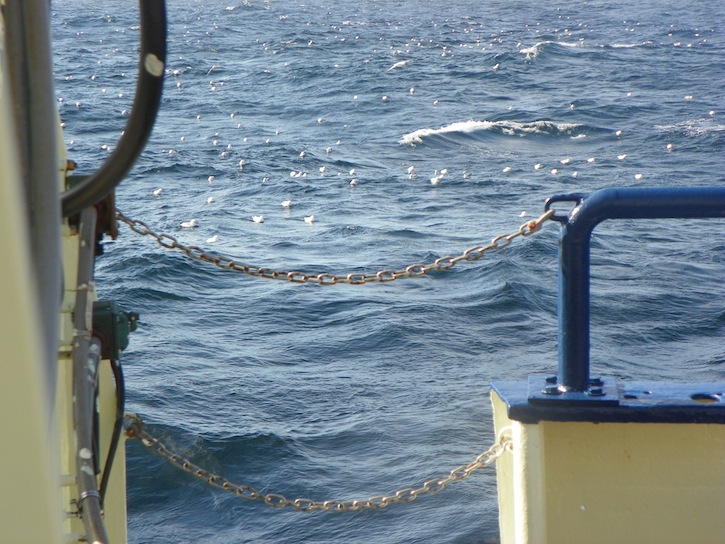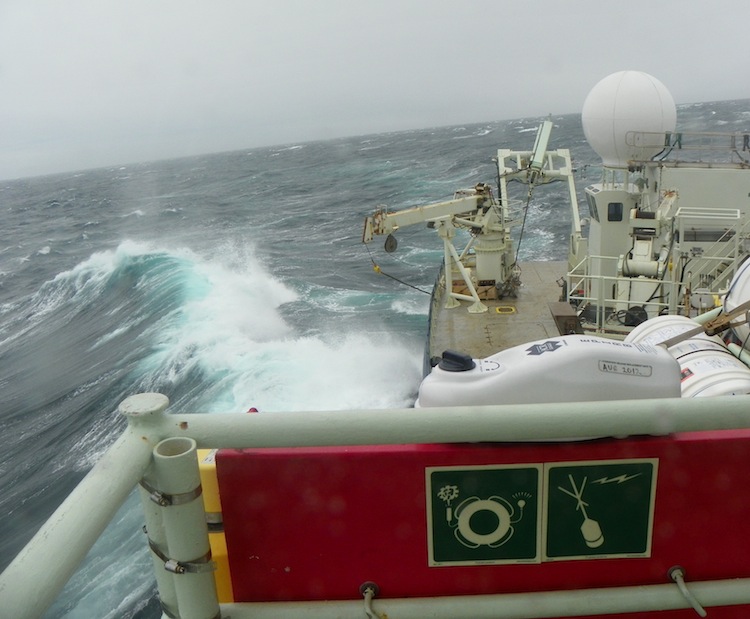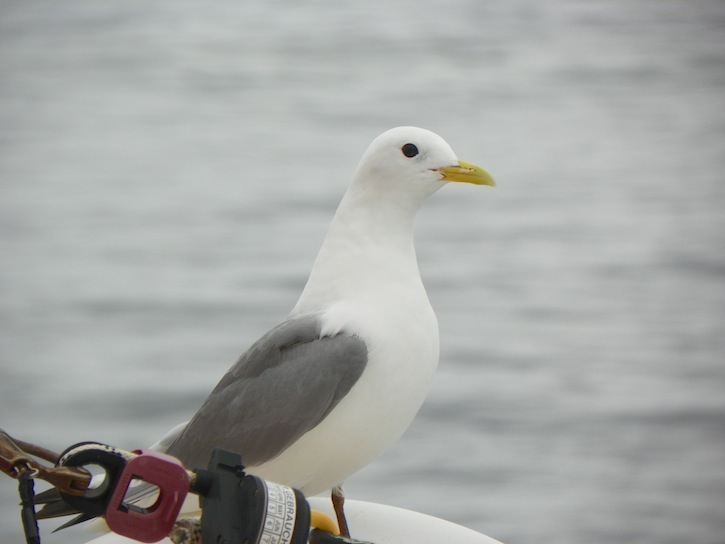This is the second set of questions from our Icelandic students and their teachers Herdis Hubner, Monica MacIntosh and Bergljot Halldorsdottir. They are 10th graders in Grunnskolinn in Isafjordur. Thank you. Question 1: What do you do in your free time aboard? Answer: There are many ways to spend free time aboard the Knorr. People take care of themselves with sleep, doing laundry in the small laundry room, using the gym, and with yoga or Pilates. With friends they watch movies in a room with a 50” flat screen TV and several hundred movie choices, play dominoes or cards, or sit in the lounge and have conversations. Four people on board play guitar. Personal activities include computer use, Sudoku and crossword puzzles, eating snacks, reading (there is a library on board) and knitting. I, personally, like to watch any science work that is going on, bird watch, hoping to see a whale while enjoying the scenery, or visit the bridge for the best view of the ship and water. Answered by Pat Keoughan, Outreach Team with input from many shipmates
Dan Torres finds a comfortable place in the sun to nap during his free time. © Pat Keoughan Question 2: Where do the crew members come from? Answer: To be a crew member on the KNORR you have to be a US citizen. However, several of this crew were born outside the continental US. The places they come from are Cuba, Russia, Poland, Cape Verde Islands, Barbados, US Virgin Islands and the Philippines. Answered by Second Mate Jen Hickey
Captain Kent Sheasley, Chief Engineer Pete Marczak, who was born in Poland, and CTD Watch Stander Mirjam Glessmer view video filmed by National Geographic Photographer Rob McGreggor. © Pat Keoughan Question 3: What’s their education? Answer: The crew members aboard must be able to speak English. (The ability to be understood when talking over a ship radio is essential to the safety of all on board.) There are different requirements for different jobs. An “able bodied seaman” certification is obtained by taking a U.S. Coast Guard test on subjects like knot tying, rules of the road, and formal commands used when steering the boat. A similar job would be an “oiler” in the engine room where the Coast Guard test covers engineering topics, safety, and the use of required machinery. Officers, the captain,chief engineer and mates, have completed higher education courses, often at a maritime academy, graduating with a degree in maritime transportation or engineering. They, too, have to take a Coast Guard test to get a license for their position. To move up to the next position, a crew member has to work at least a year at his/her job before taking the test for the next level. Putting in time at sea is important to obtain a higher level job. To become a captain, therefore, you would have to spend a year as a first mate and then pass the Coast Guard test for a captain’s license. Answered by Jen Hickey and Chief Engineer Pete Marczak
Second Mate Jen Hickey wears a hard hat while working to deploy the small boat. © Pat Keoughan Question 4: How high have the waves been? Answer: We had waves averaging about 5 meters (15 feet) during the storm we went through Friday, Saturday and Sunday. Two of the mates told me they saw 10meter (30 foot) high waves from the bridge. There are no instruments aboard to measure wave height so the answers I get are personal estimates, although with years of experience. The average wave height for the Denmark Strait in summer, when there is no storm, is about a meter (3 feet). Answered by Jen Hickey
Northern fulmars enjoy a storm free day in the Denmark Strait. © Pat Keoughan Question 5: Are you seasick? Answer: I had not been seasick until the second day of the storm. I have wrist bands with small plastic balls that put pressure on my wrist in a place that keeps a person from getting seasick. I didn’t really believe they worked. I took them off Saturday night because they were tight. Then we had quite a rough night; a chair turned over in my room and things fell off of tables and counters all over the ship. I was quite ill in the morning. The wrist bands went right back on and I have been fine ever since! There have been several people affected with seasickness to some degree. They may disappear to their rooms for the morning but with medication or will power, they’re back doing their job later in the day. Dallas mentions it at the end of his journal #11, “Saved by Anton”. Answered by Pat Keoughan
A wave higher than the stern rail rushes toward the KNORR during last weekend's storm. © Pat Keoughan Question 6: Do you have pets on board? Answer: There are no pets aboard the KNORR. I heard an old story of a cat being hidden from the captain by the crew for a year and also of someone having a parrot. Another story told of a crew member who adopted an abandoned dog on a dock in the Middle East and brought it back to the US on the KNORR. Unfortunately, there are no pets allowed aboard today. It’s hard to take care of a pet when crew members come and go on a ship that is not in use for part of the winter. A pet would cause difficulties when arriving in foreign ports with different customs requirements for animals. I believe the animal lovers aboard miss having a cat or dog around. I do, I find myself, when no one is looking, talking to the kittiwakes, fulmars and other seabirds watching us from the water. Answered by Pat Keoughan with help from Jen Hickey and other crew members
I was hoping this kittiwake I surprised on deck would stay for a while. Checking out perhaps his first human, he decided it was best to leave quickly. © Pat Keoughan Last updated: December 27, 2011 | |||||||||||
Copyright ©2007 Woods Hole Oceanographic Institution, All Rights Reserved, Privacy Policy. | |||||||||||


